One of the most seen butterflies all over Costa Rica is this Banded Peacock, Anartia fatima (my gallery link) photographed here along one of the roads/streets in Punta Leona Resort, Puntarenas, Costa Rica.
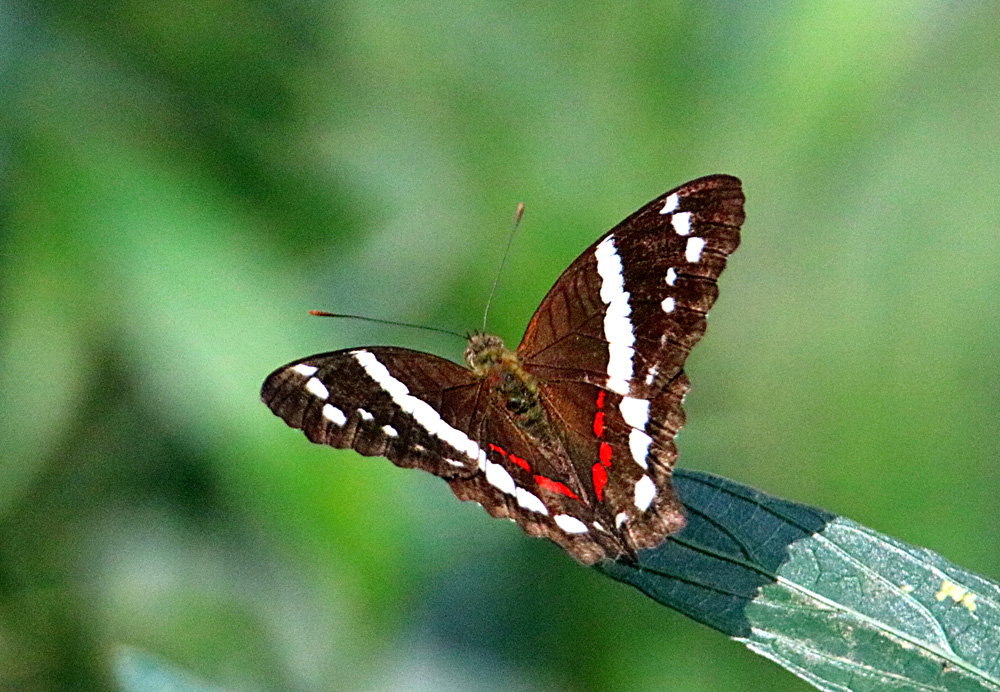
¡Pura Vida!
One of the most seen butterflies all over Costa Rica is this Banded Peacock, Anartia fatima (my gallery link) photographed here along one of the roads/streets in Punta Leona Resort, Puntarenas, Costa Rica.

¡Pura Vida!
This is my second sighting of a Black Pondhawk, Erythemis atala (my gallery link) with the other one not far from Punta Leona at the old Hotel Villa Lapas in Tarcoles which today (January 1) reopens as a more expensive Marriott, Santa Lucia Jungle Hacienda (their website link). Hope they still have the abundance of wildlife on their property next door to Carara National Park! I may try it out one time, we’ll see. 🙂
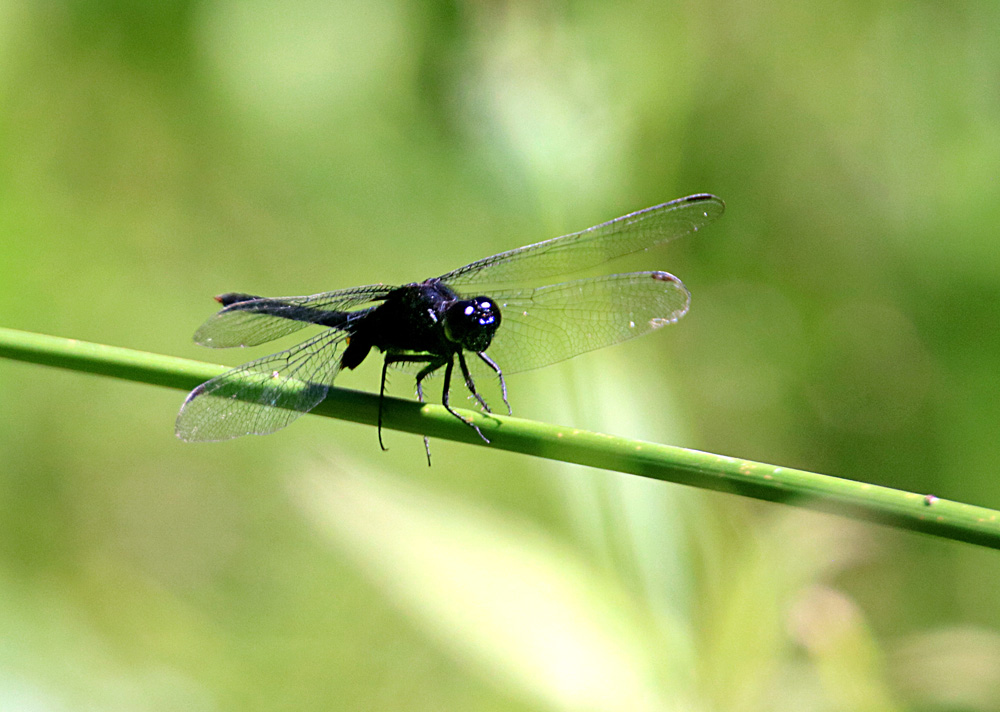
¡Pura Vida!
At least that is what everyone calls them in English! 🙂 While the “official” common name in English is “Common Morpho!” And in Spanish everyone is covered with “Mariposa Morfo Azul Común” or “Common Blue Morpho Butterfly!” 🙂 And “Common” is good because there are other species with blue tops! 🙂 See my photos from many different locations of this, the National Butterfly of Costa Rica, Common Morpho, Morpho helenor gallery. Four shots I liked from Punta Leona after this first introductory photo . . .
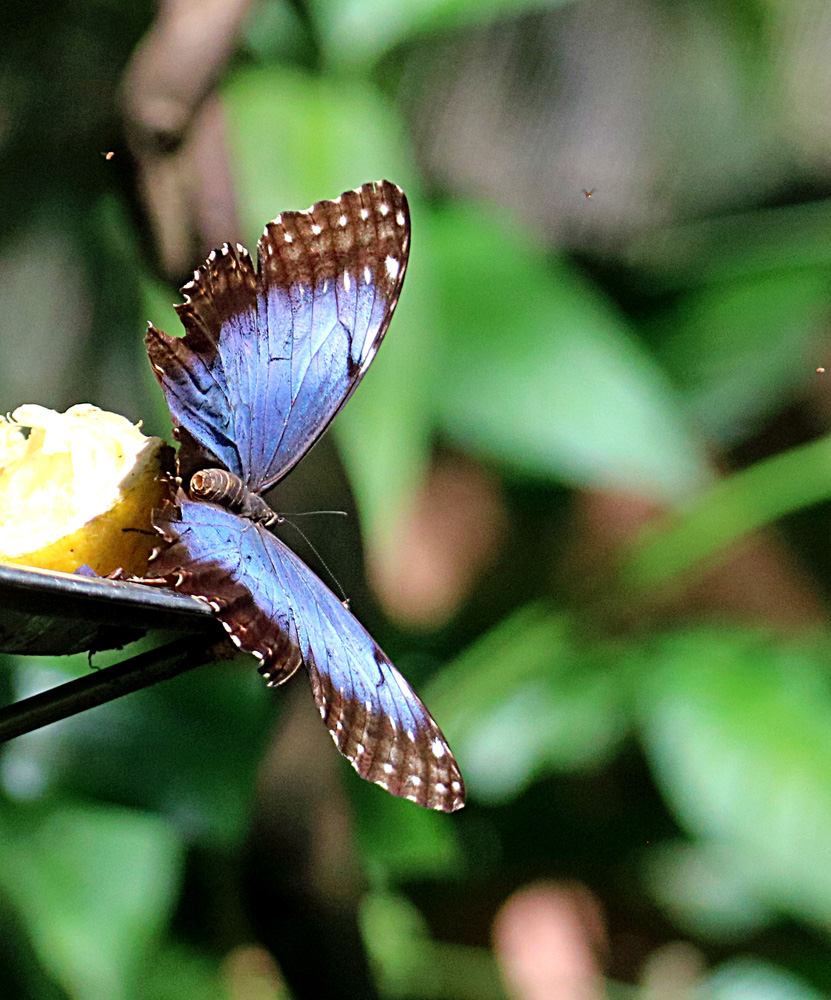
My one photo today through the very slow internet here is probably my favorite from the 6:15 am birding hike today.
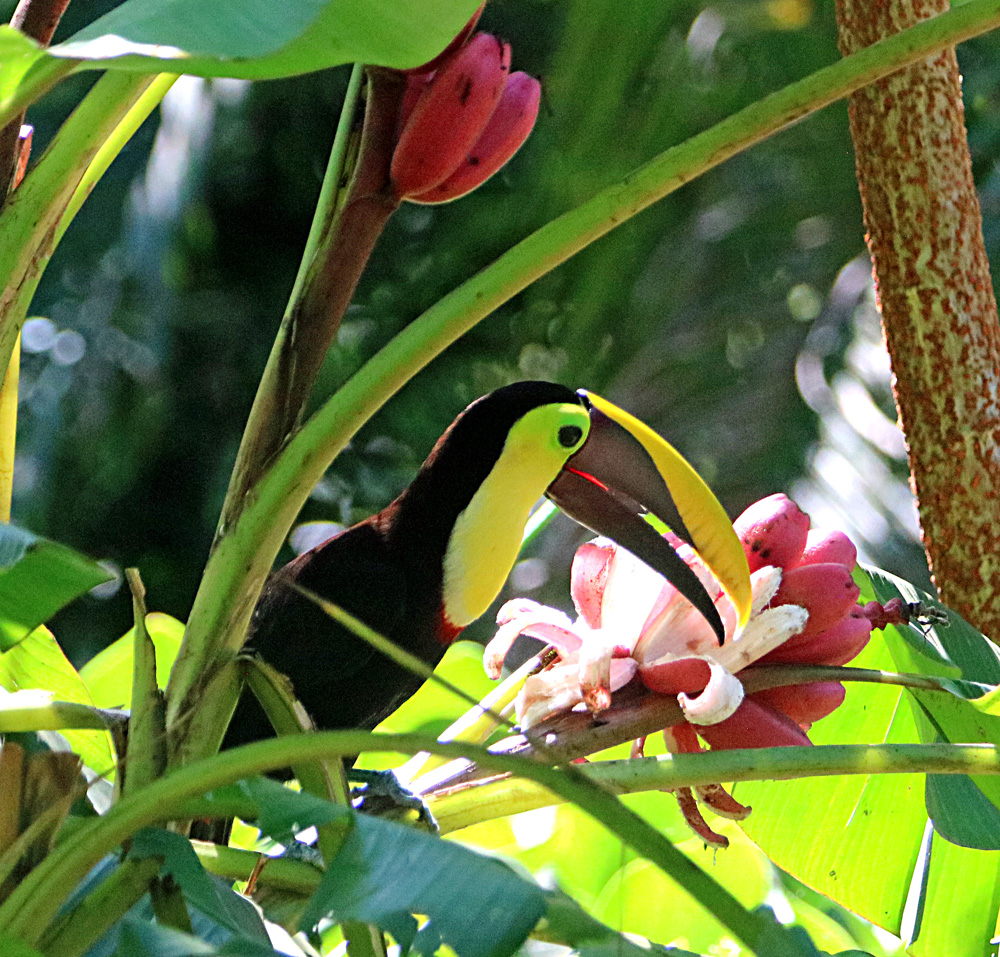
The bird was eating banana plant flowers and interestingly at breakfast this morning a monkey got in and stole a banana of a man’s plate. 🙂
Tomorrow I will share one butterfly shot from the 9:30 am butterfly hike, during which I was not feeling great and will definitely slow down the rest of my time here! By 10 it is almost unbearably hot & humid and I was exhausted, coming back to the room for a nap and then this afternoon another nap. 🙂 I guess I’m an older man than I want to admit. 🙂
Tonight will be the hotel’s “special” Christmas Dinner. Tomorrow I will focus on the beach on Christmas Day with shore birds early morning, maybe a tidepool effort at low tide, and maybe a sunset reflection on the ocean, since the sun sets here now behind the land with the coast at an angle. 🙂 The better sunset place here is at Villa Coleta up the hills from Punta Leona.
Merry Christmas to all the faithful readers!
¡Pura Vida!
To live in a green world, absorbing both the oxygen and the green spirit is one of the greatest blessings of living in Costa Rica. I randomly picked these photos as representative of this spirit, though many others could have represented it just as well . . .
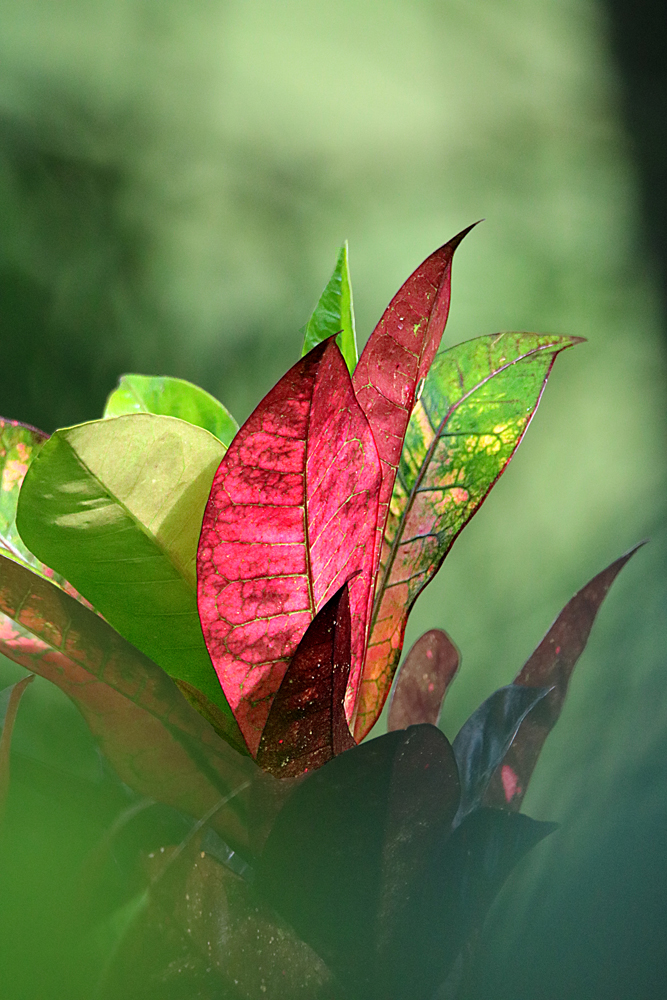
In the recent days of many creatures eating the ripe palm berries, a Chachalaca or a squirrel broke one of the berry limbs off and it fell to the ground. With many more on the tree, he/she stayed in the tree and the bottom of the pecking order, Clay-colored Thrush, enjoyed the berries off the dropped limb. Plenty for everyone! 🙂 And as I watched this epicurean delight I suddenly realized that these birds have no teeth to chew their food and thus swallow the berry whole! 🙂 I’m enjoying these observations of nature! Simple life in a simple country.
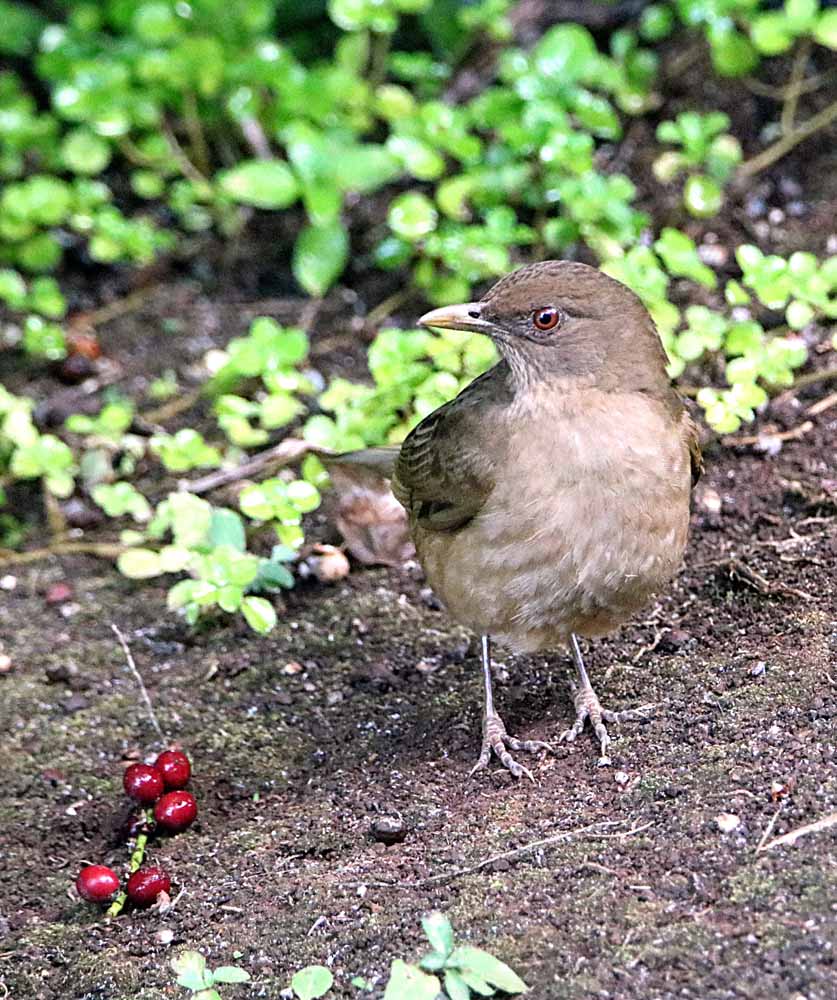
Just one of the 245 species of reptiles in Costa Rica, an adult Black Spiny-tailed Iguana (my gallery link) climbing up the almost vertical concrete retainer-wall behind one of my gardens that is covered in vines, ground cover, ferns and whatever will cover plain ol’ concrete! (my jungle style!). Though I’ve had and photographed several juveniles in that garden, this is my first adult. 🙂 I guess he went on up the hill or driveway to K’s house and gardens! 🙂 Looking for food.
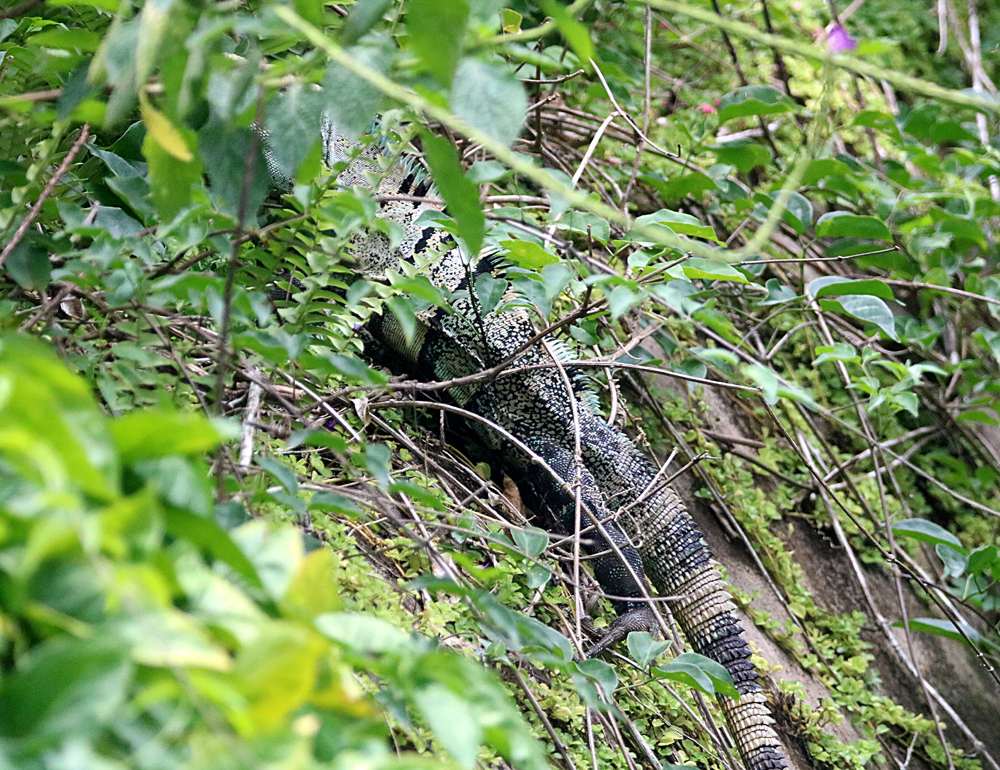
¡Pura Vida!
That big bunch of green palm berries in my October 25 post turned red in November and multiple creatures began to eat with the Chachalacas and Boat-billed Flycatchers the most possessive. Below this introductory photo is a gallery showing the “pecking order” for these particular palm berries when I was out to see it. Note that I never saw the iguanas eating them (though they do eat the Nance Berries) but that doesn’t mean they didn’t partake, I just never got a photo. And they would possibly be some competition to the Chachalacas, though those birds stay in families or flocks outnumbering others, as well as being the largest. 🙂
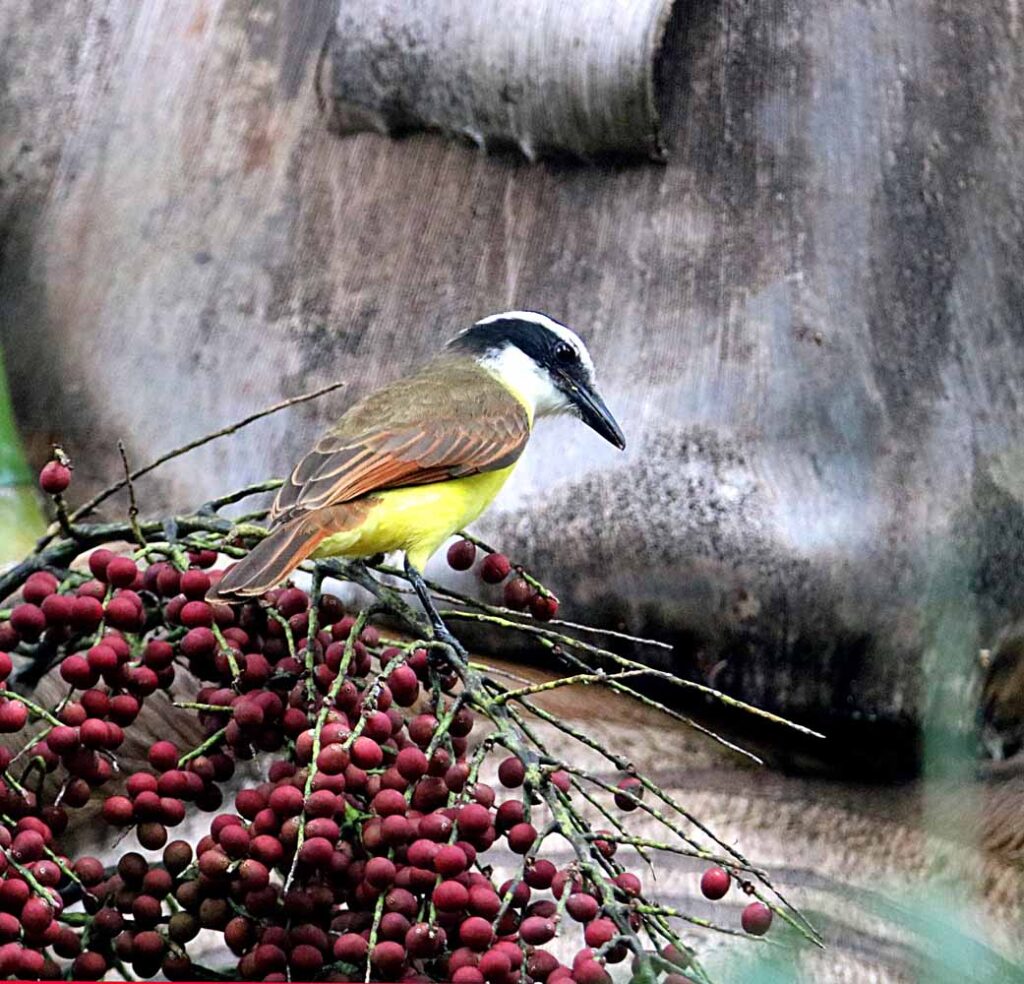
In November this attractive leaf just popped up in my garden as what I figured was a “weed,” and thus I pulled it up, after photographing with my cell phone, and threw it away. Then I ran this leaf photo through iNaturalist and discovered that it is (was) a Marigold Pepper, Piper marginatum (iNaturallist link). Just another one of the many nature surprises I keep finding in my garden and all over Costa Rica! 🙂 What I read about this is that there are no “peppers” or fruit, but rather people use the leaves for seasoning and extracting a flavorful oil. Hmmmm, maybe I should have kept this “weed!” 🙂
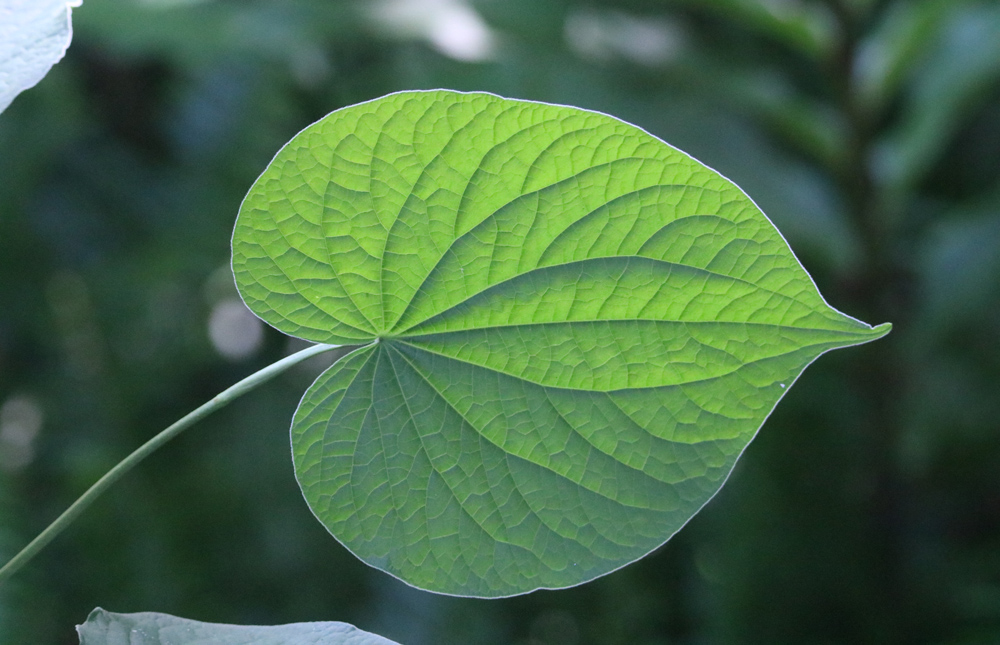
See more such beauties in my Leaves & Nature Things GALLERY.
¡Pura Vida!
This Rufous-backed Wren (my gallery link) stopped in one of my Nance Trees, not for a berry (wrong time of year) but for an insect snack out of the little Air Plant growing on the tree. 🙂
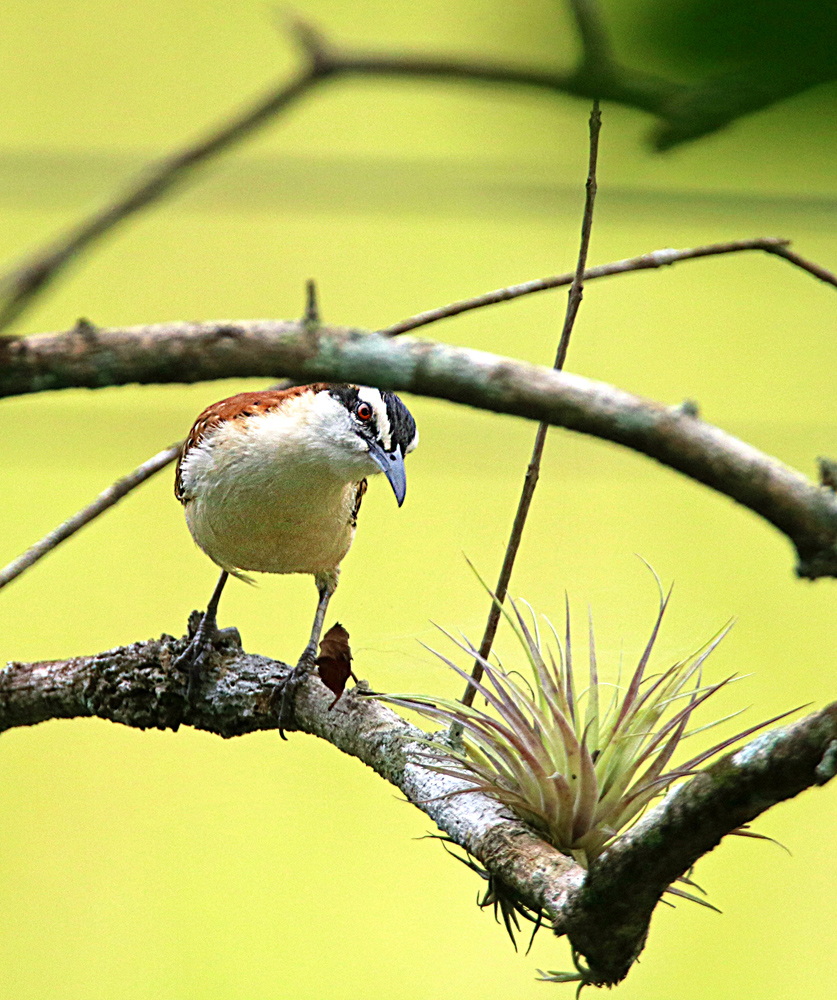

¡Pura Vida!